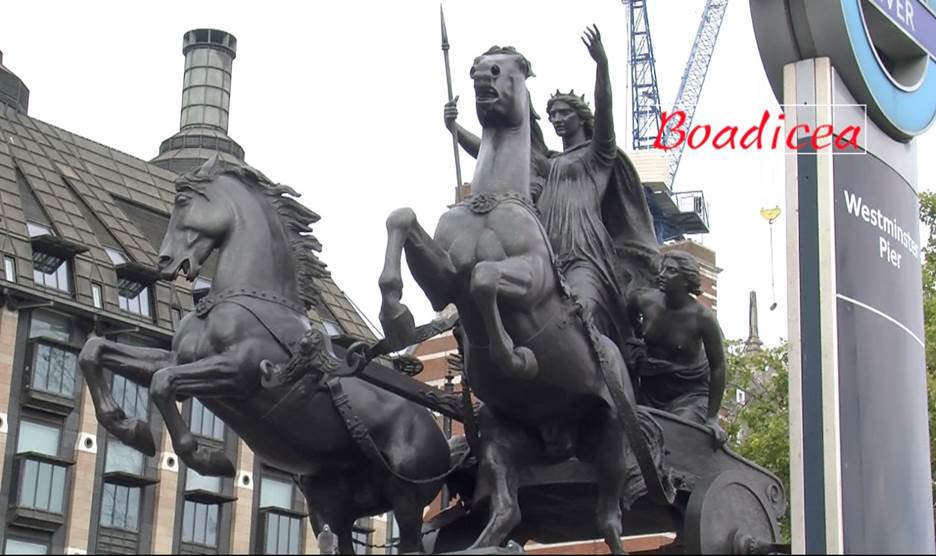
Boadicea is considered a British national heroine and a symbol of the struggle for justice and independence
Boadicea, Little-known British National Heroine
By Dr Khalid Siddiqui
Ohio

Julius Caesar invaded England twice - in 55 and 54 BC. He made a few alliances but did not proceed any further. In 43 AD, Roman emperor Claudius again invaded England. Eleven tribal kingdoms surrendered to Claudius. A new Roman province of Britannia was established.
Prasutagus (the husband of Boadicea) was one of those kings who ruled over a British Celtic tribe called Iceni, in an area roughly what is now Norfolk. As an ally of Rome, his tribe was allowed to remain nominally independent, and to ensure this Prasutagus named, in his will, the Roman emperor as co-heir to his kingdom, along with his two daughters.
When he died, the Romans ignored his will and took over, depriving the nobles of their lands, and plundering the kingdom. Boadicea was flogged and her daughters raped. All this led to the revolt of the Iceni and other British tribes in 60 or 61 AD, under the leadership of Boadicea. They destroyed Camulodunum (modern Colchester). She was able to capture Londinium (London) and Verulamium, and burnt them to the ground. In the battle 70,000 to 80,000 Romans and Britons died.
Meanwhile, the Roman governor Suetonius regrouped his forces and decisively defeated the Britons. Roman rule was reestablished and lasted until 410 AD. Boadicea and her daughters were caught. She was flogged and her daughters raped. Shortly afterwards she died, possibly, by suicide. Boadicea was once thought to have been buried at a place which lies now between platforms 9 and 10 in King’s Cross station in London. That is very controversial.
Boadicea is considered a British national heroine and a symbol of the struggle for justice and independence. Many books have been written on her patriotism, even by Roman historians. During the Renaissance, several plays were written based on her character. English poets like Lord Tennyson, Edmund Spencer and William Cowper have projected her as a British cultural icon. Many Victorian era children’s books mentioned her. A novel was also written in 1893 based on her story. Boadicea was adopted by the ‘Votes for Women’ movement in 1903 as as one of the symbols of the campaign. All this has turned her into a legendary figure.
A bronze statue ‘Boadicea and Her Daughters’ is located to the northwest end of the Westminster Bridge just across the Big Ben in London (see photographs) near Westminster Pier. It shows Boadicea and her two daughters in her war chariot. It was produced between 1856 and 1871 by Thomas Thornycroft, cast in 1896, and installed in 1902. Prince Albert (husband of Queen Victoria) had sponsored it. He had lent two horses as models. Unfortunately, Albert died in 1861 before the statue was completed. Behind the statue, the windows of the Portcullis House are seen. This was built in 2001 to provide offices for the 213 members of parliament and their staff.
A life-sized statue of Boadicea stands at the Colchester Town Hall in Essex. Colchester was the first capital of the province of Roman Britannia until it was replaced by Londinium (London) by the end of the first century. Permanent exhibitions describing the Boadican Revolt are at the Museum of London, Colchester Castle Museum and Verulamium Museum.

